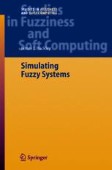Search
Search Results
-
A Probabilistic Logic-based Framework for Characterizing Knowledge Discovery in Databases
In order to further improve the KDD process in terms of both the degree of automation achieved and types of knowledge discovered, we argue that a...
-
On Statistical Independence in a Contingency Table
This paper gives a proof showing that statistical independence in a contingency table is a special type of linear independence, where the rank of a...
-
Justification and Hypothesis Selection in Data Mining
Data mining is an instance of the inductive methodology. Many philosophical considerations for induction can also be carried out for data mining. In...
-
Direct Products of Fuzzy Subgroups and Fuzzy Cyclic Subgroups
In Chapter 6, a necessary and sufficient condition for a fuzzy subgroup to be a weak direct sum of fuzzy subgroups was obtained by employing known...
-

-

-

-

-
From Genetic Variation to Probabilistic Modeling
Genetic algorithms ⦓GAs) [53, 83] are stochastic optimization methods inspired by natural evolution and genetics. Over the last few decades, GAs have...
-
Fuzzy Probability Theory
In this chapter we look more closely at the fuzzy binomial distribution, the fuzzy Poisson, and at the fuzzy normal,exponential and uniform...
-
Inventory Control II
This chapter continues the inventory control problem studied in the previous chapter. The new system is shown in Fig. 17.1. We have added two things...
-
Summary and Conclusions
The first objective of this book is to explain how many systems naturally become fuzzy systems. The second objective is to show how regular (crisp)...
-
Simulation Optimization
In this chapter we discuss how we plan to solve the optimization problems attached to the simulation as expressed in (5-4)-(5-5) in Chap. 5, or...
-
Machine Shop I
The queuing system in this chapter is shown in Fig. 11.1. This application was adopted from a problem in ([1], p.594). We continue this problem in...
-
Priority Queues
This chapter will use the queuing system in Chaps. 5 and 9, but with priority orders. The system is shown in Fig. 19.1. Everything is the same as in...
-
Hierarchical Bayesian Optimization Algorithm
The previous chapter has discussed how hierarchy can be used to reduce problem complexity in black-box optimization. Additionally, the chapter has...
-
Optimizing a Production Line
The simple production line considered in this chapter is shown in Fig. 20.1. This problem has been adapted from an example in [1]. This situation is...
-
Queuing I: One-Step Calculations
In this chapter we show situations where simulation can produce the same results as fuzzy calculations which employ the extension principle. We argue...
-
Simulation Programs
In this chapter we present some of the GPSS programs used in Chaps. 9–26. We had to omit many programs in order to keep this chapter. less that 20...
-
Queuing II: No One-Step Calculations
In this chapter we will study the fuzzy system shown in Fig. 5.1 now reproduced as Fig. 9.1. This example was adapted from an example in [1]. The...
